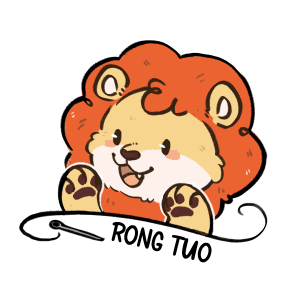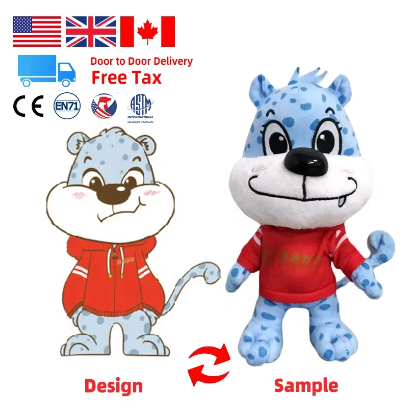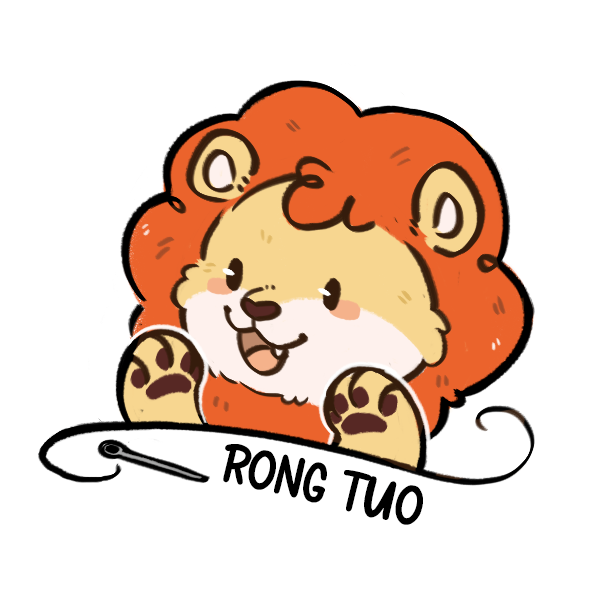Common Fabric Materials for Plush Animal Toys
Polyester Plush: Softness and Durability Combined
When it comes to plush toys, polyester remains the go to material most of the time thanks to how soft it feels while still holding up pretty well over time. Toy makers love working with this synthetic stuff because it keeps its shape and doesn't get all matted out after being washed dozens of times or squeezed by little hands day after day. What makes polyester really stand out though is that it can actually feel kind of like real wool or cotton when touched, which adds to why so many parents reach for these types of stuffed animals. Parents especially appreciate how bright colors stay looking fresh on polyester plushies even after months of playtime, and kids tend to hold onto them forever since they don't fall apart so easily.
Organic Cotton: Hypoallergenic and Eco-Friendly
Organic cotton has become pretty much standard stuff when making soft stuffed animals these days, especially among parents who want something gentle on kids' skin and better for the planet. The thing about organic cotton is that no harmful chemicals get involved during growing, so it doesn't irritate sensitive skin nearly as much as regular cotton does. We've seen a real shift lately where shoppers care way more about what goes into their purchases. According to numbers tracked by the Global Organic Textile Standard folks, sales of organic cotton products just keep climbing because people actually want stuff that won't harm Mother Earth. For manufacturers switching over to organic materials means not only looking good ethically but also meeting customer expectations without breaking the bank too badly.
Velvet & Luxury Textiles for Premium Designs
When it comes to plush toys targeting the luxury market, velvet has become the go-to fabric choice. The soft feel and rich look of velvet really enhances how these toys feel and look. For designers creating upscale plush items, this material opens up possibilities where toys can also function as fancy decorations around the home. Toys made with velvet or other fancy fabrics tend to cost more money, which helps position them in the premium price range. What makes these special materials so valuable is that they transform ordinary plush toys into something people want to display rather than just toss on a shelf. This appeals particularly well to customers who appreciate fine details and want something exclusive for their living spaces.
Stuffing and Filling Materials
Polyester Fiberfill: Lightweight and Washable
Most plush animal toys get stuffed with polyester fiberfill because it's light and pretty easy to take care of. Just throw them in the washing machine and they keep their shape, so the toys stay soft and don't fall apart after a while. Another good thing about polyester fiberfill? It doesn't soak up water and is safe for kids since it contains no harmful chemicals. That makes it ideal for children's toys where safety matters most. Plus, manufacturers love it because it doesn't break the bank. Industry numbers back this up too – somewhere around 60% of all plush toys on store shelves these days are filled with polyester fiberfill instead of other materials.
Memory Foam: Shape-Retaining Support
More and more plush toy makers are turning to memory foam these days because it holds its shape so well while still offering good support. Toys that need to keep their form, like those detailed character stuff animals, really benefit from this material. What makes memory foam special is how it molds around a kid's body when they hug or cuddle with their toy, which means extra comfort for little ones. Some studies looking at kids' bodies suggest that playing with memory foam stuffed toys might actually help maintain better posture during playtime. While not every manufacturer has made the switch yet, many parents report preferring these newer memory foam options over traditional stuffing materials for both comfort and durability reasons.
Natural Kapok: Plant-Based Alternative
Kapok makes a great natural option for filling plush toys since it comes from the seed pods of the kapok tree. Light weight and breaks down naturally over time, which is why many green minded parents are turning to kapok when shopping for kids stuff. The material actually wicks away moisture pretty well too, so toys stay comfortable longer even after lots of playtime. According to some recent findings from the Environmental Textile Exchange, we're seeing more interest in plant based options like kapok these days because people want greener choices for their families.
Safety Components in Plush Toy Construction
Safety Eyes & Nose Attachments
When making plush toys, safety matters a lot, especially when it comes to things like eyes and noses. These parts are usually crafted from materials that won't harm kids if they somehow end up in mouths. Toy makers go to great lengths to attach them properly so they don't come loose easily. There are strict rules about what makes a toy safe for children, and companies must follow these guidelines carefully. Testing happens throughout production to catch any problems early on. Looking at recent research shows just how dangerous loose parts can be. Kids have gotten hurt before because small components came off during playtime. That's why designers spend extra time ensuring every detail meets safety standards before products reach store shelves.
Embroidered Details for Choke-Free Designs
Embroidery adds a layer of safety to toys because it removes those little parts that could come loose and pose choking hazards. The absence of these detachable bits means fewer risks for kids playing with their favorite plushies. Plus, embroidery lets designers get really creative with patterns and colors that grab attention from both little ones and their parents. Most safety organizations actually recommend this technique over standard methods where pieces might pop off during playtime. For companies making stuffed animals, this approach works wonders. They can still put lots of character into their designs while keeping them securely attached so no tiny fingers end up grabbing something dangerous. Many parents appreciate seeing these embroidered features when shopping for gifts since they know what's inside won't be coming apart anytime soon.
Sustainable Material Choices
Recycled Fleece: Reducing Textile Waste
Recycled fleece represents something pretty special for the textile world these days. It's made right out of those old plastic bottles people throw away after drinking soda or water. What makes this so great? Well, it cuts down on tons of waste lying around landfills while showing companies care about being green. When manufacturers start using stuff that's already been used once before, they actually help protect our planet and appeal to customers who really want their purchases to make sense environmentally speaking. With more recycling programs popping up everywhere lately, makers of soft stuffed animals now have access to all sorts of different recycled fleeces to work with. And let's face it, having more choices means better quality toys can be produced without hurting Mother Earth too much along the way.
Eco-Friendly Production Certifications
The Global Organic Textile Standard (GOTS) and similar certifications help ensure plush toys get made in ways that are better for the planet. People who care about how their stuff gets made are starting to notice these labels more and more. Toy companies that earn these stamps of approval tend to draw in shoppers looking for greener options. Market data shows folks want these eco marks on their purchases, so many manufacturers are rushing to get certified just to keep up. With green credentials becoming something buyers really look for, having those eco certifications gives plush toy makers an advantage when competing against other brands in stores today.
FAQ
What is the most durable material for plush toys?
Polyester plush is highly durable and maintains its form and color even with repeated washing and use, making it a popular choice for plush toys.
Why is organic cotton used in plush toys?
Organic cotton is hypoallergenic and eco-friendly, making it suitable for sensitive skin and environmentally conscious consumers.
What are the benefits of using memory foam in plush toys?
Memory foam retains shape and offers support, enhancing comfort and maintaining structure in character plushies.
Are embroidered details safe for children's toys?
Yes, embroidered details eliminate detachable components, reducing choking risks and offering safe and secure designs.
How do eco-friendly certifications benefit plush toy manufacturers?
Eco-friendly certifications can attract consumers who prioritize sustainability, providing a competitive advantage in the market.


